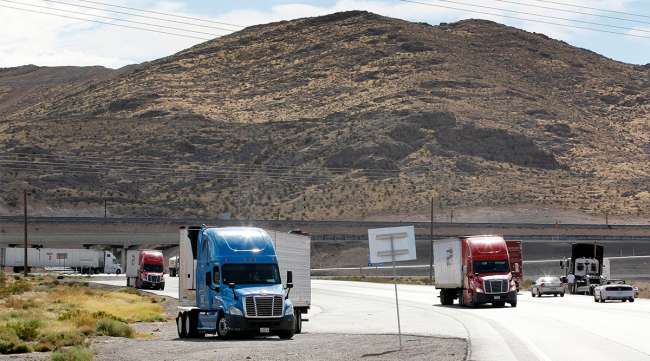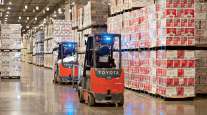Senior Reporter
Trucking’s Role in Restarting Economy Requires Measured Pace

[Ensure you have all the info you need in these unprecedented times. Subscribe now.]
As state and local governments gradually begin loosening stay-at-home orders issued to slow the spread of the novel coronavirus, trucking industry experts are exploring how the industry can best respond to this next phase of the country’s response to the pandemic.
“It’s not as simple as hitting a light switch, it’s more like an entire wall of switches,” American Trucking Associations President Chris Spear said during an interview with Transport Topics Radio. “If you go too fast, you’ll blow a circuit, but if you go too slow, you’re not going to throw enough light on the path ahead — you won’t be able to see where you’re going. It’s very complex and we have got to get this right.”
Spear and several trucking industry leaders are advising the Trump Administration about what needs to be done to restart the nation’s economy. Despite some near-term gains after the pandemic first hit, the trucking industry has not been immune to the economic downturn — the Labor Department said on May 8 that 88,300 trucking and warehouse positions were lost, even as many trucking firms were busy delivering critically needed medical supplies to hospitals and clinics and groceries to stores.
“It was a tough month, and when we start reporting volume numbers, I would expect to see some numbers that are not pretty,” ATA Chief Economist Bob Costello told TT. “In March, we were all going out and buying food and toilet paper, and it was all hands on deck, and that’s slowed down a bit in April. I think we’ll see volumes fall in April, down significantly.”
The nation’s overall unemployment rate rose to 14.7% in April as at least 20.5 million Americans became unemployed because of the virus, the Labor Department said. In the retail sector. 2.1 million jobs were lost during the month, and several retailers — including Neiman Marcus, Pier 1 Imports and Modell’s Sporting Goods — have filed for bankruptcy.
Spear noted that trucking companies with exposure to the retail sector are feeling the effects.
“We’re not immune to it,” he said. “Brick-and-mortar retailers like Macy’s — if you’re moving that, you’re definitely going to feel it.”

Spear
Truckers are also feeling the effects from the downturn in the fuel sector, he noted. “Almost out of the gate, people stopped driving, commuting, taking vacations. There’s just an abundance of supply. Those are the ones that were hurt and continue to feel the pain,” Spear said.
Even carriers who capitalized on increased demand for certain goods are experiencing a slowdown, he noted. “Some were able to shift to other sectors of the economy and move freight for them; there were sectors that saw growth,” he said. “But right now those that are servicing even the grocery sector are starting to really feel it because the overabundance of things that people bought in March and April are being consumed. If you buy an abundance of things like that, it’s going to take time to use them before you buy more.”
Meanwhile, the manufacturing industry is cutting back on production of both durable and non-durable goods. The sector lost 1.3 million jobs in April, with the durable goods segment shedding 914,000 positions and nondurable goods industries cutting 416,000, including 86,000 in food manufacturing. Construction employment declined by 975,000.

Dhawan
Rajeev Dhawan, director of the Economic Forecasting Center at Georgia State University, told TT the 14.7% unemployment figure was in line with what he had forecast.
“We’ve just had a hard economic stop,” he said. “When we flipped off the light switch, this was to be expected.”
Dhawan noted, however, that there is a sliver of optimism for employees classified as being on furlough instead of laid off, since oftentimes furloughed workers retain their benefits during a work stoppage. Plus, companies usually call them back once economic conditions improve.
The Labor Department said the number of people not in the labor force who currently want a job stands at 9.9 million, a number that nearly doubled in April from March. The increase reflects the impact of mandatory business closures, stay-at-home orders and the fear of contracting the coronavirus — all of which prevented individuals from engaging in labor market activity in April.
Those not counted as unemployed were either not actively looking for work or were unavailable to take a job.
“The speed of getting the economy going and getting people back to work will depend on how fast we get a health solution,” Costello said.
Want more news? Listen to today's daily briefing:




